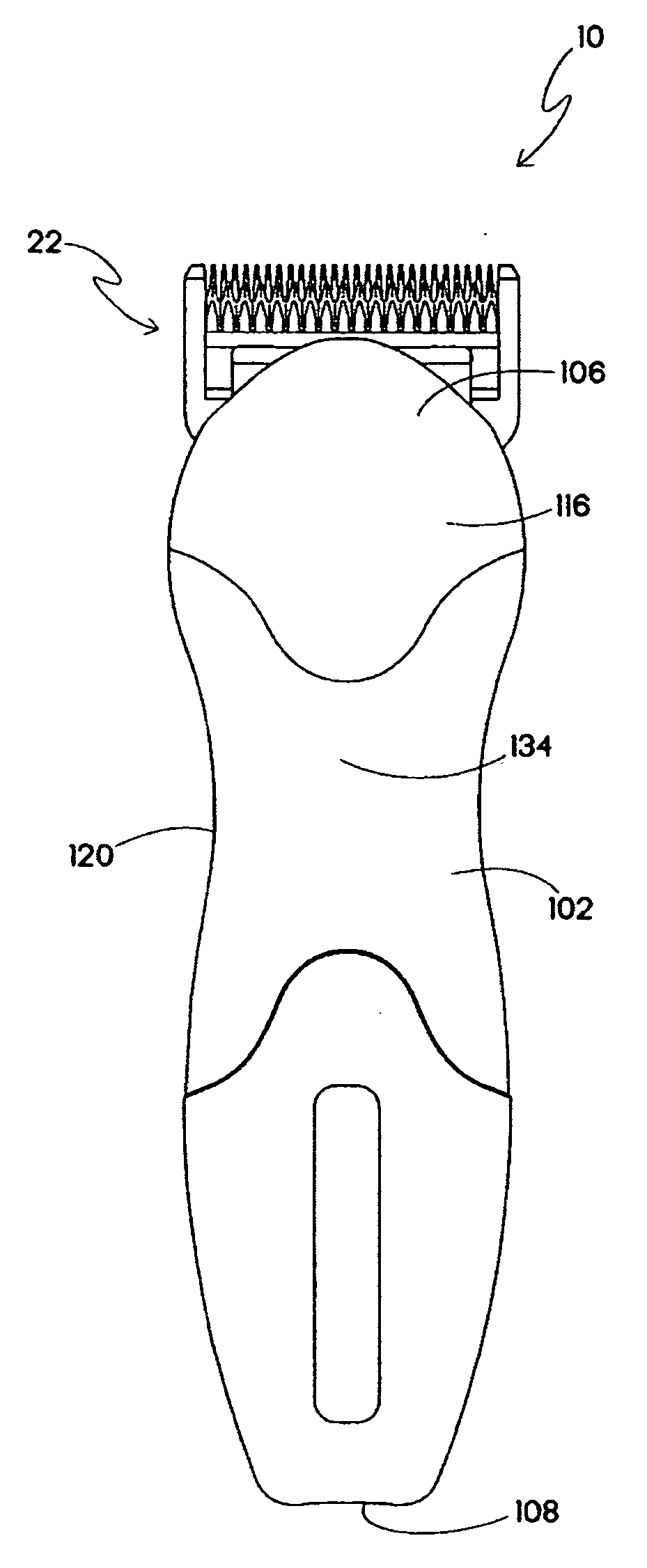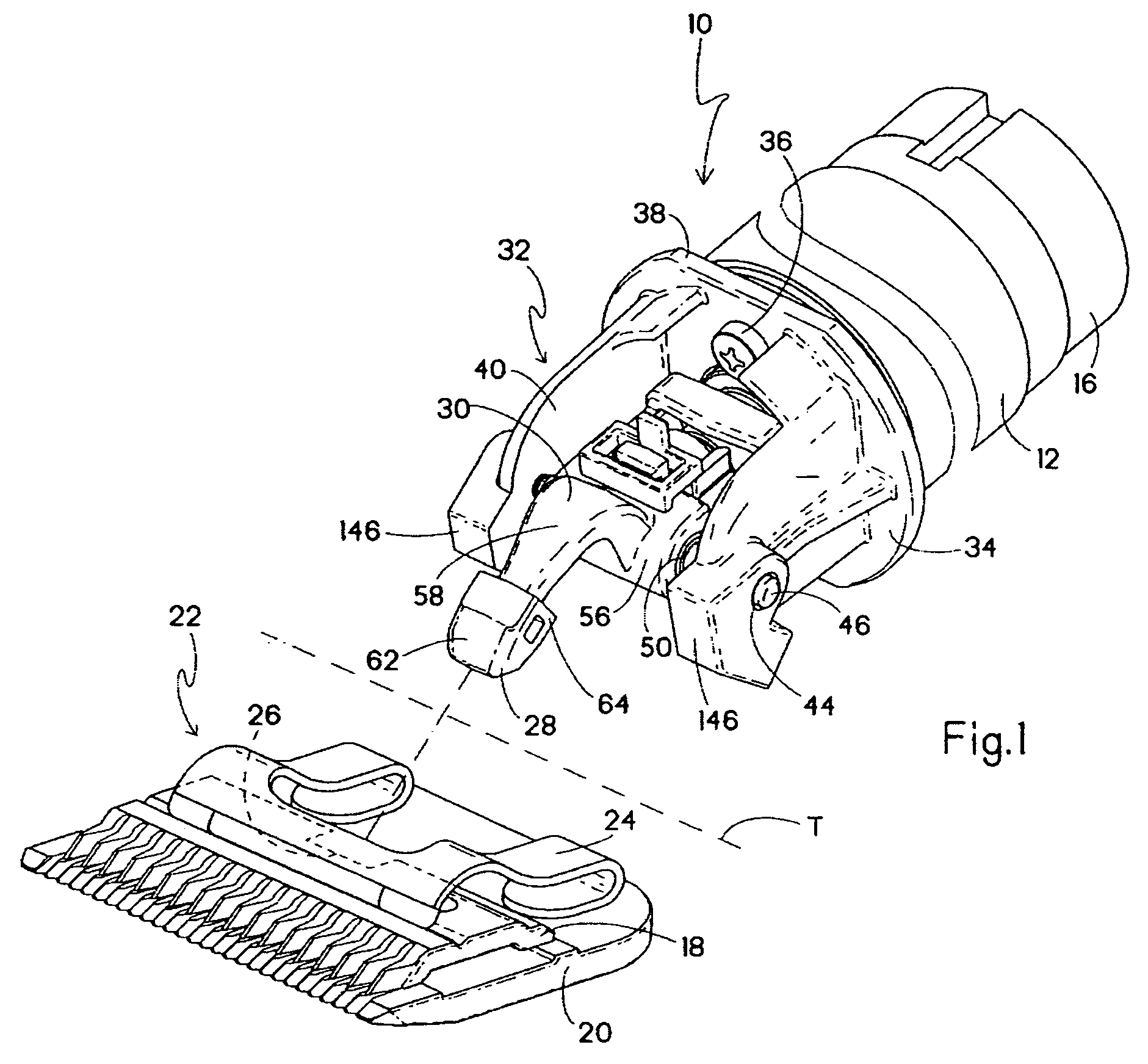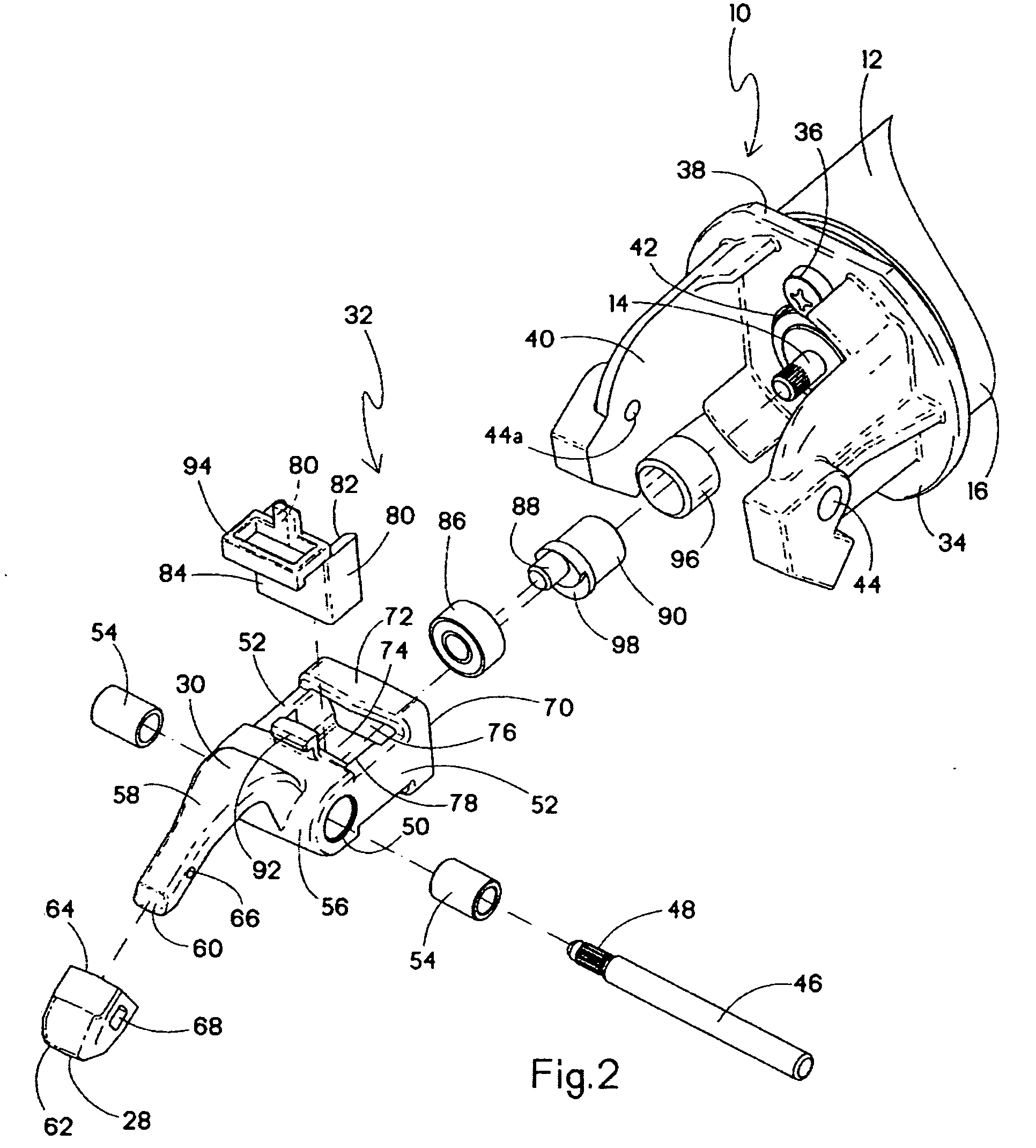Rotary motor clipper with linear drive system
a technology of linear drive and rotary motor, which is applied in the direction of metal working apparatuses, etc., can solve the problems of increasing operational noise, reducing the operational efficiency of the clipper, and wear and deterioration of the driving end so as to reduce the accumulation of hair clippings, reduce the wear and deterioration of the drive element, and increase the operational life
- Summary
- Abstract
- Description
- Claims
- Application Information
AI Technical Summary
Benefits of technology
Problems solved by technology
Method used
Image
Examples
Embodiment Construction
[0017] Referring now to FIGS. 1 and 2, a hair clipper suitable for use with the present drive system is generally designated 10, and includes a motor 12, typically an electric motor powered by battery or line voltage. It will be appreciated that the size and / or type of the motor may vary to suit the application. The motor 12 is designated as a rotary type, having an output shaft 14 (FIG. 2) projecting axially from a motor housing 16. As is well known in the art, rotation of the output shaft 14 must be translated into linear motion in the form of linear reciprocation of a moving blade 18 relative to a stationary blade 20 of a clipper bladeset 22.
[0018] The bladeset 22 typically includes a biasing element 24 in the form of a spring which causes the moving blade 18 to be slidingly biased against the stationary blade 20 for more effective cutting action. In the present embodiment, the moving blade 18 defines a drive recess 26 (shown hidden) for receiving a blade engagement or driving t...
PUM
 Login to View More
Login to View More Abstract
Description
Claims
Application Information
 Login to View More
Login to View More - R&D
- Intellectual Property
- Life Sciences
- Materials
- Tech Scout
- Unparalleled Data Quality
- Higher Quality Content
- 60% Fewer Hallucinations
Browse by: Latest US Patents, China's latest patents, Technical Efficacy Thesaurus, Application Domain, Technology Topic, Popular Technical Reports.
© 2025 PatSnap. All rights reserved.Legal|Privacy policy|Modern Slavery Act Transparency Statement|Sitemap|About US| Contact US: help@patsnap.com



